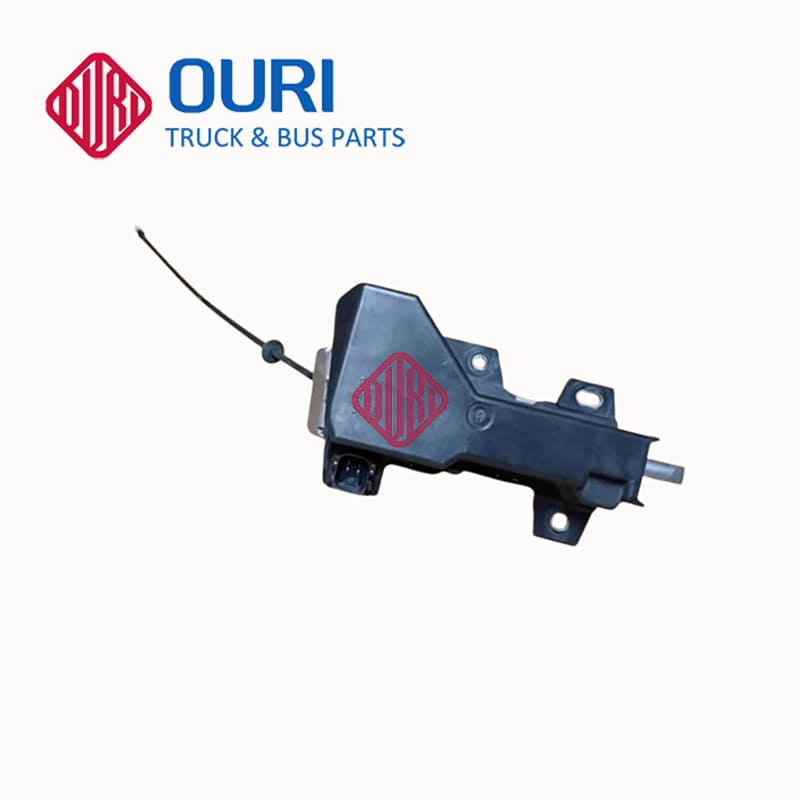The clutch is a fundamental system in a manual transmission car, acting as the bridge between the engine and the wheels. Its primary function is to engage and disengage power, allowing you to change gears smoothly and come to a stop without stalling. To understand this complex operation, we can break it down by examining its key parts and how they work together as a cohesive system, all controlled by the simple press of your foot on the clutch pedal.
This entire clutch system can be divided into two main sections: the assembly that transfers power and the mechanism that controls it.
Section 1: The Power Transfer Assembly (The Core Parts)
This group of parts is the heart of the operation, located between the engine and the gearbox. They are responsible for physically connecting and disconnecting the rotating power.
- Flywheel: Bolted directly to the engine's crankshaft, this heavy disc spins continuously with the engine. It provides a large, smooth friction surface for the clutch to grip onto.
- Clutch Disc (or Friction Disc): This is the key connecting part . It is sandwiched between the flywheel and the pressure plate. Its surfaces are covered with a high-friction material, and its center has a splined hub that locks directly onto the transmission's input shaft. When clamped, it transfers power from the engine to the gears.
- Pressure Plate: This is the clamping unit of the system . Bolted to the flywheel, it contains a powerful diaphragm spring that applies massive pressure to squeeze the clutch disc against the flywheel. This creates a solid link for power transfer. Its function is directly controlled by the driver's input at the clutch pedal.
Section 2: The Control System (The Activation Parts)
This is the network of parts that translates your physical action into a mechanical command. The control system begins with the clutch pedal and ends at the clutch assembly itself.
- Clutch Pedal: The clutch pedal is the only part of this system that the driver directly interacts with. Located on the far left of the footwell, pressing it is the command to disengage the clutch. The travel and pressure of the clutch pedal are carefully engineered for feel and feedback.
- Actuation System (Cable or Hydraulic): The force from the clutch pedal needs to be transferred to the clutch. This is done via one of two sub-systems:
- Cable Actuated System: A sturdy, braided metal cable directly connects the clutch pedal lever to the clutch fork.
- Hydraulic Actuated System (More Common): This is a more complex but smoother system. It uses a master cylinder connected to the clutch pedal to push hydraulic fluid through a line to a slave cylinder. This hydraulic system multiplies force and allows for more precise control.
- Clutch Fork and Release Bearing: This is the final stage of the control system. The movement from the cable or slave cylinder pushes the clutch fork. The fork then presses the release bearing (or throw-out bearing) against the springs of the pressure plate. This bearing is a critical part that allows the stationary fork to actuate the spinning pressure plate.
How the Entire Clutch System Works in Harmony
The true genius lies in how all these parts function as a single, integrated system :
- When the Clutch Pedal is RELEASED (Engaged):
The clutch system is at rest. The pressure plate clamps the clutch disc firmly against the spinning flywheel. Engine power is directly transmitted through these parts to the transmission, and the car moves. In this state, the entire system is under load, transferring power.
- When the Clutch Pedal is PRESSED (Disengaged):
This action initiates the entire sequence. Pressing the clutch pedal activates either the cable or hydraulic system. This force moves the clutch fork, which pushes the release bearing against the pressure plate's springs. The bearing releases the clamping force, freeing the clutch disc. The connection between the engine and wheels is broken, interrupting the power flow. This allows you to change gears. Releasing the clutch pedal reverses this process, smoothly re-engaging the system.
Conclusion
In summary, the clutch in your car is not just a single part, but a sophisticated system of interconnected mechanical and hydraulic parts. From the driver's input at the clutch pedal to the final clamping force of the pressure plate, every component has a specific role. Understanding these parts and how they work together as a system demystifies the operation of a manual transmission and highlights the importance of smooth, deliberate clutch pedal operation for the longevity of the entire clutch system .

 Oct 17 , 2025
Oct 17 , 2025


